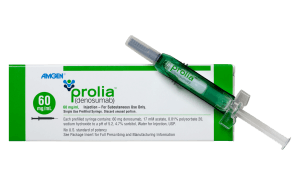
About 168,000 women in the US are estimated to have metastatic breast cancer. It’s been estimated that about 30% of early-stage breast cancers eventually metastasize. For men, almost 2,800 new cases of metastatic breast cancer are diagnosed annually, with over 500 deaths.
Metastatic Breast Cancer Awareness Day began in 2009 as a step to educate the public about the need for research into the subject of breast cancer and the development of new cancer treatments. It is supported by many of the national cancer institutes around the US that focus on cancer generally and on women’s health in particular. The American Association for Cancer Research, the Breast Cancer Research Foundation, and the National Breast Cancer Foundation all publish articles and organize fund-raising campaigns to raise public awareness of breast cancer’s dangers for the general public.
It’s also important to take note that metastatic breast cancer doesn’t only affect women, and part of the month is dedicated to raising awareness about how men can also develop the disease. This year, October 17-23 has been designated as Men’s Breast Cancer Awareness Week.
About Metastatic Breast in Women
More About Metastatic Breast Cancer in Women
Metastatic breast cancer is also known as stage IV breast cancer. It is a type of breast cancer at a late stage in the progression of breast cancer, where the cancer cells have spread beyond the breast to other parts of the body. The spread can happen through the lymphatic system or bloodstream, and the cancer most commonly spreads to the bones, lymph nodes, lungs, liver, and brain. MBC is characterized as regional MBC, where the spread is mainly localized to the upper chest, and distant MBC, where the cancer has spread widely throughout the body.
At what age is breast cancer common in women?
Approximately half of all women who develop breast cancer were younger than 62 years of age when they were diagnosed. A much smaller number of women are diagnosed with breast cancer younger than 45.
About Metastatic Breast Cancer in Men
More About Genetically Linked Breast Cancers in Men 
Male carriers of the BRCA1/2 gene, which is the subject of much focus when it comes to efforts to detect breast cancer in women, also face an increased risk for cancer, particularly of the prostate, pancreas, and breast. But although males represent half of BRCA1/2 carriers, men are much less likely to receive breast cancer screening for BRCA mutations or treatment to prevent breast cancer. Moreover, most are unaware of the associated risks and do not get the same recommendations as women.
Breast cancer research has shown that BRCA gene mutations can be passed down to children from both the mother and father. A girl can be at risk of breast or ovarian cancer from the gene passed down from either her mother’s or her father’s family. Similarly, a boy can inherit a mutated BRCA gene from either side of the family. It puts him at an increased risk for developing prostate, breast, pancreas, and other cancers.
Although fewer than 1% of all breast cancers occur in men, when men do carry a BRCA1/2 mutation, their risk for breast cancer can increase considerably. The lifetime risk of breast cancer for carriers of the BRCA1 mutation can be as high as one in ten compared to just one in one hundred for the general population. Male BRCA1 carriers face an almost fourfold increase in the risk of developing prostate cancer and twice the risk of developing pancreatic cancer. Male BRCA2 carriers have a lifetime risk of between 27% and 60% of developing prostate cancer and a 7% risk of developing pancreatic cancer.
FAQ
What is the survival rate for people with Metastatic Breast Cancer (MBC)?
The five-year relative survival rate for people with regional MBC is 86%. This means that a person with regional MBC is 86 percent as likely as someone without cancer to survive for five years. In the case of distant metastatic breast cancer, the five-year relative survival rate is 29%.
What are the earliest indications of metastasis?
- Persistent pain in the back or upper neck
- Bone pain.
- Shortness of breath
- Coughing
- Deep fatigue and generally feeling unwell
- Headache
- Seizures
- Mood changes.
- Speaking difficulties
Where is the first place to which breast cancer usually spreads?
When breast cancer metastasizes, it usually spreads from the breast tissue to the sentinel lymph node located closest to the breast that carries the original tumor. This lymph node is often located in the underarm on the same side as the breast.
Are there alternative treatments to chemotherapy or surgery for MBC?
In men as well as pre-and perimenopausal women with breast cancer, Kisqali (ribociclib) combined with hormone therapy has been proven to be more effective at stopping the growth of metastatic cancers than standard chemotherapy treatment with combined drugs. It can also be combined with estrogen receptor antagonists as the first-line endocrine-based therapy or after the disease progresses on estrogen and progesterone therapy.

















